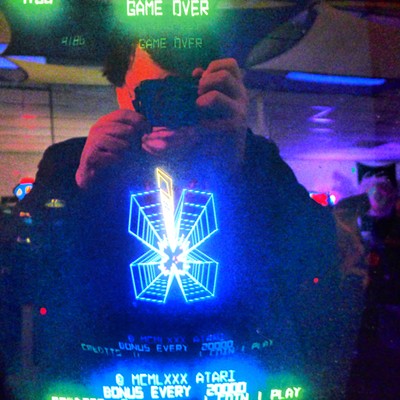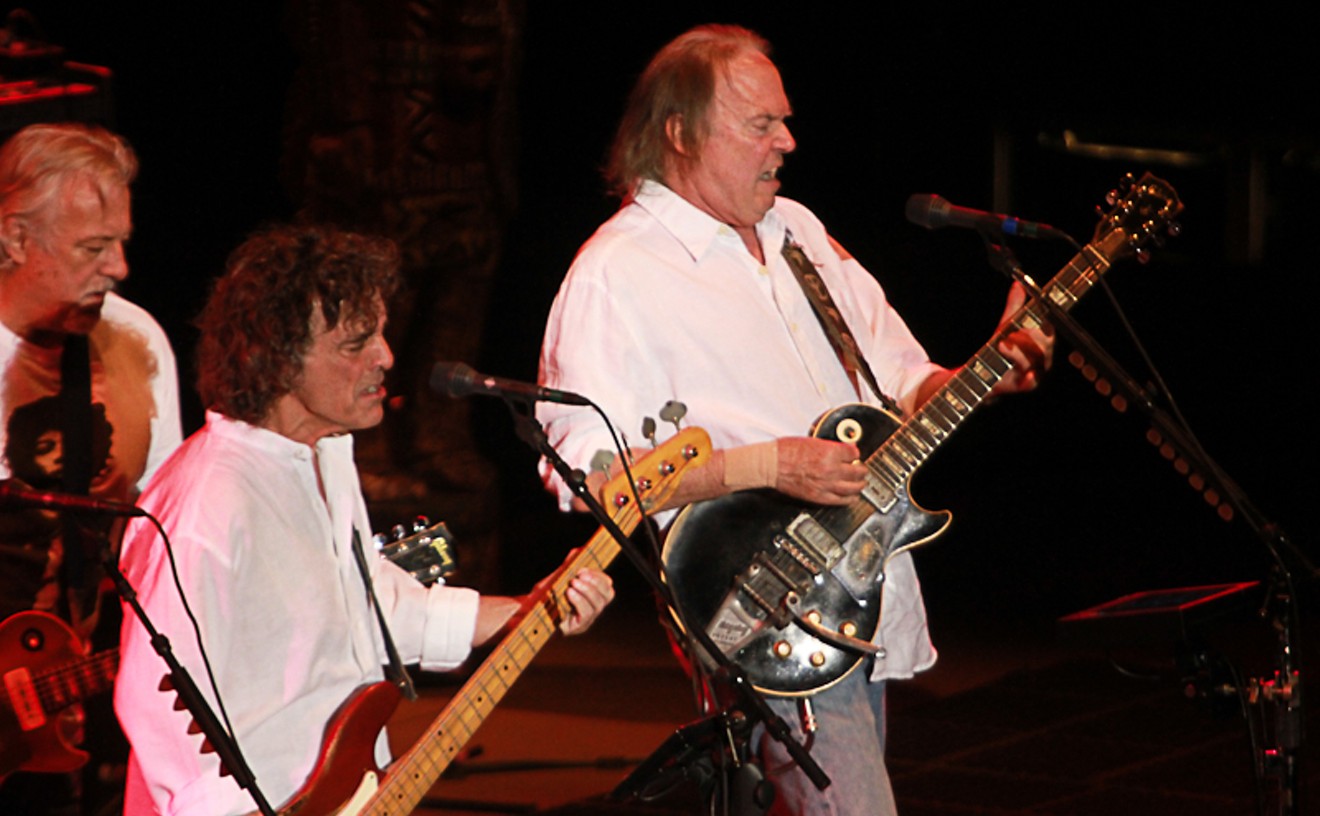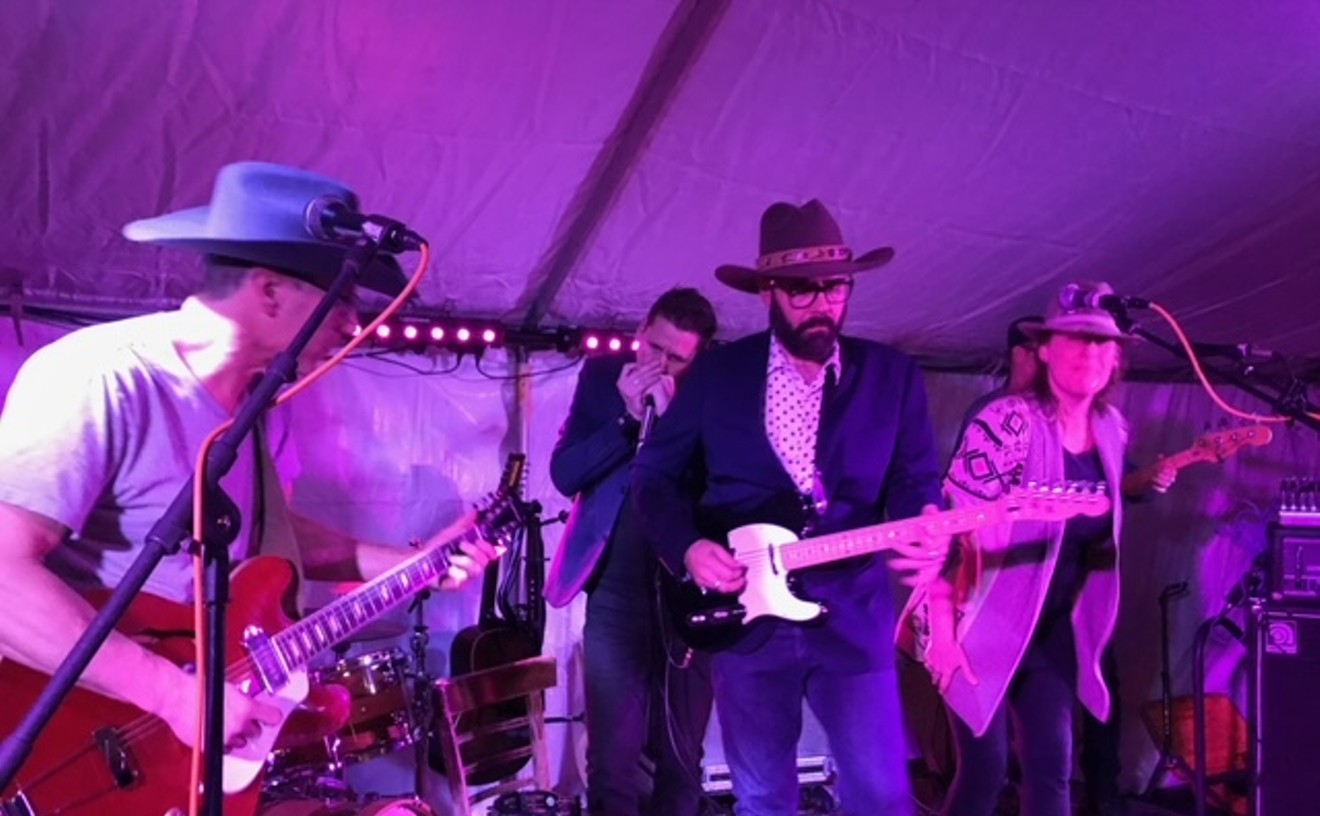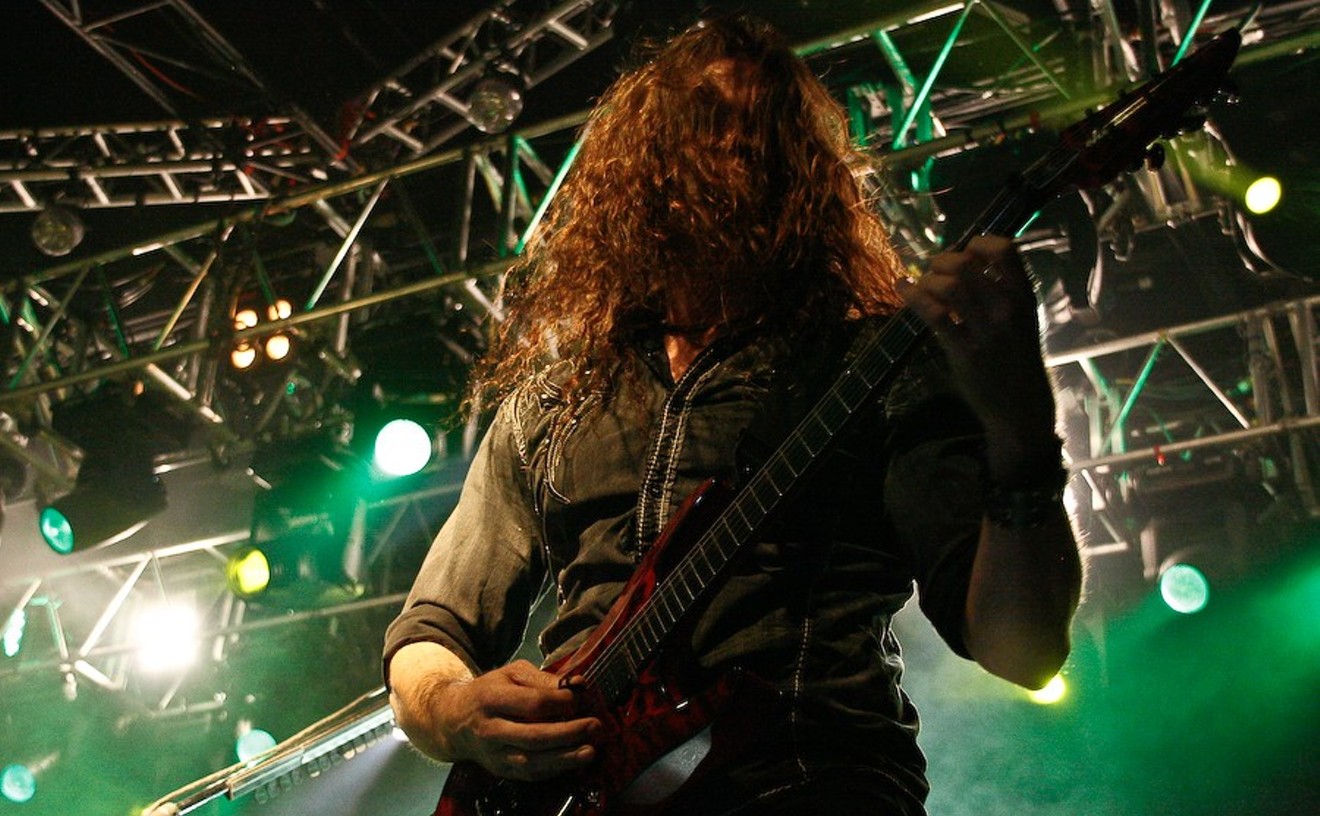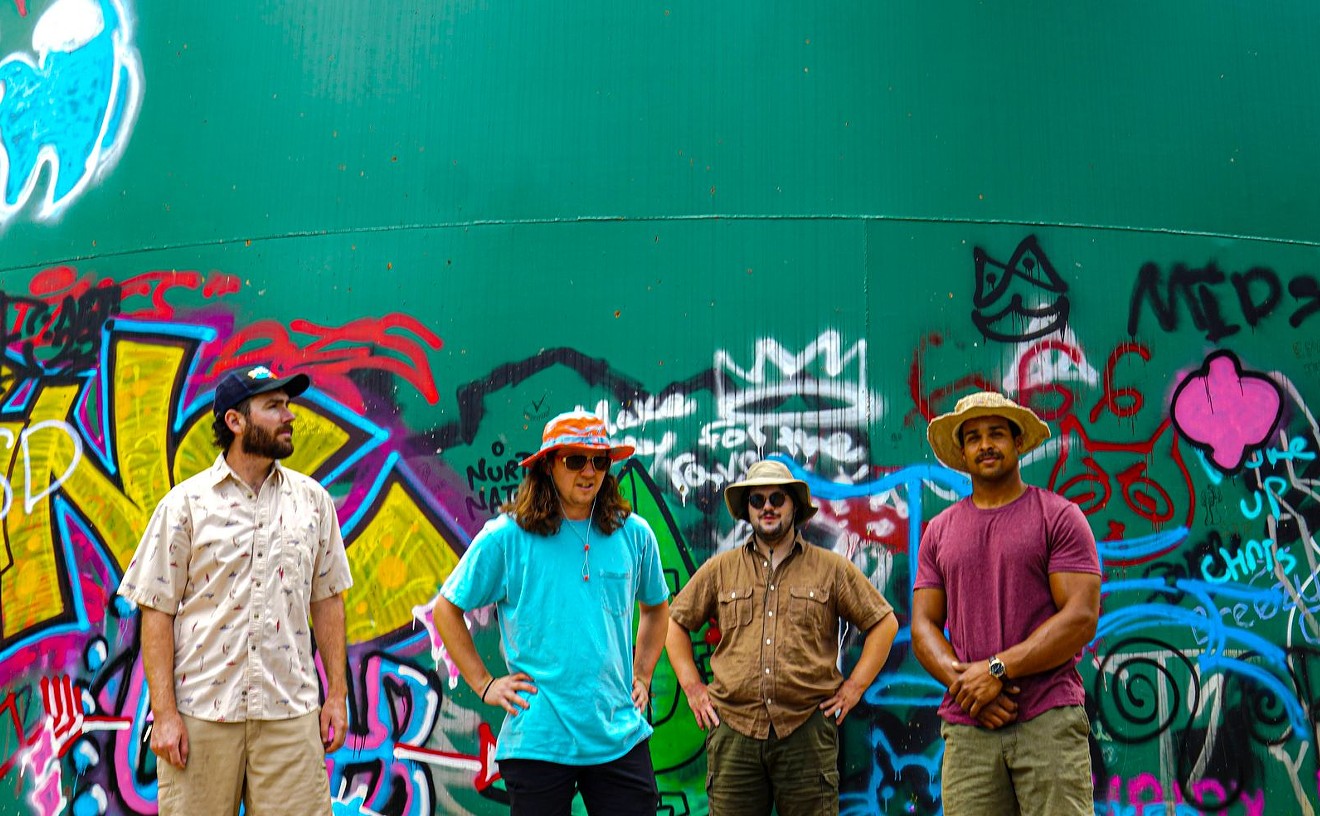Church Fire and Morlox, both from Denver, might seem like unusual collaborators on a split cassette release. The two acts don’t have much in common at first glance: Church Fire could be considered a synth-pop act, and Morlox is more in the realm of IDM. (Each side of the tape has three songs by each project and a fourth track featuring both bands.)
But the two bands live in a similar world, playing almost entirely off-the-beaten-path shows in Denver’s more noise-oriented and experimental music scenes. And their members are united by similar musical interests, which might explain why the tape works so well, and why the pair’s upcoming eleven-day tour (which kicks off this Friday at Rhinoceropolis) promises to be so fruitful.
Patrick Urn, of Morlox, cut his teeth on making electronic music when he was still living in Belen, New Mexico. He was a goth kid in a town where the musicians, such as there were, mostly played punk. He moved to Denver in the late ’90s while still a teenager; he had a friend here in legendary electronic musician J. Frede, who was then still part of Chapter 23.
Within a year or two of coming to Denver, Urn co-founded Backwards Records with John Gross of the group Page 27, Matt Jones and Eric Isbell of Blackcell and Ezra Nye and Lucio Duran of In Ether.
“I remember a very specific meeting at a house I lived in with John Gross, and Matt Jones came over as Blackcell,” recalls Urn. “And we said, ‘Okay, TOPY’s [Thee Temple ov Psychick Youth, an art/music collective influential in industrial culture] dead, what are we going to do? We can’t play these techno parties because we’re too noisy. We can’t play these industrial shows because we’re too noisy. We don’t fit into the noise thing.’”
But Gross, who had been deep into the noise scene for years at that point, saw the common ground between In Ether and Blackcell, and Backwards Records was born. Urn eventually moved to Seattle and then Pittsburgh to help develop the organization’s chapters there before returning to Denver.
“The Backwards Records thing was our first attempt to address our being new here, not fitting in with the raves, not fitting in with the noise shows, definitely not fitting in with the rock shows,” he says. “And at the industrial and goth nights they thought we were weird because [we weren’t playing] all their favorite songs. So we had to start our own thing.”
Shannon Webber and David Samuelson of Church Fire grew up in Englewood and went to middle school together. Samuelson got involved with experimental rock bands like Bangtel and Dinner With Cannibals, and Webber started left-field political punk band Dangerous Nonsense. In 2009, they decided to form Sew Buttons On Ice Cream to play music together. After a few years of having a full band and working out what they wanted to do with the project, the duo pared the lineup down to the two of them and changed the name to Church Fire in 2013.
That same year, Urn retired his Syphilis Sauna guise and focused on his dark-ambient project Herpes Hideaway before turning his attention to Morlox. It was also around that time that Urn became aware of Church Fire’s music.
“They’re honest, straightforward,” says Urn about Church Fire’s approach to music. “They’re Hubert Selby Jr. about things. This is the shit. This is the way life works. It’s not ugly, necessarily, but it’s not pretty [either]. It’s the way that it is. They understand that in a way that perhaps not everyone else does, not even to conceptualize it. Maybe they never even thought about it, but with their music and intent [they] seem to cover that area of human life.”
“He’s really open to everything,” says Webber of Urn. “He really honors people for who they are and lets them be who they are. But he also writes dope-ass beats, which isn’t our main thing.”
“I’d never thought of so many rhythmic possibilities, because I had studied harmony and melody and know how to write that,” adds Samuelson. “He’s rhythmically complex in ways we’re not.”
“He’s all in,” concludes Webber. “He throws himself fearlessly and authentically into the music. He’s edgy and dark. We can all be authentic iconoclasts together.”
[
{
"name": "Air - MediumRectangle - Inline Content - Mobile Display Size",
"component": "12017618",
"insertPoint": "2",
"requiredCountToDisplay": "2"
},{
"name": "Editor Picks",
"component": "17242653",
"insertPoint": "4",
"requiredCountToDisplay": "1"
},{
"name": "Inline Links",
"component": "18838239",
"insertPoint": "8th",
"startingPoint": 8,
"requiredCountToDisplay": "7",
"maxInsertions": 25
},{
"name": "Air - MediumRectangle - Combo - Inline Content",
"component": "17261320",
"insertPoint": "8th",
"startingPoint": 8,
"requiredCountToDisplay": "7",
"maxInsertions": 25
},{
"name": "Inline Links",
"component": "18838239",
"insertPoint": "8th",
"startingPoint": 12,
"requiredCountToDisplay": "11",
"maxInsertions": 25
},{
"name": "Air - Leaderboard Tower - Combo - Inline Content",
"component": "17261321",
"insertPoint": "8th",
"startingPoint": 12,
"requiredCountToDisplay": "11",
"maxInsertions": 25
}
]


